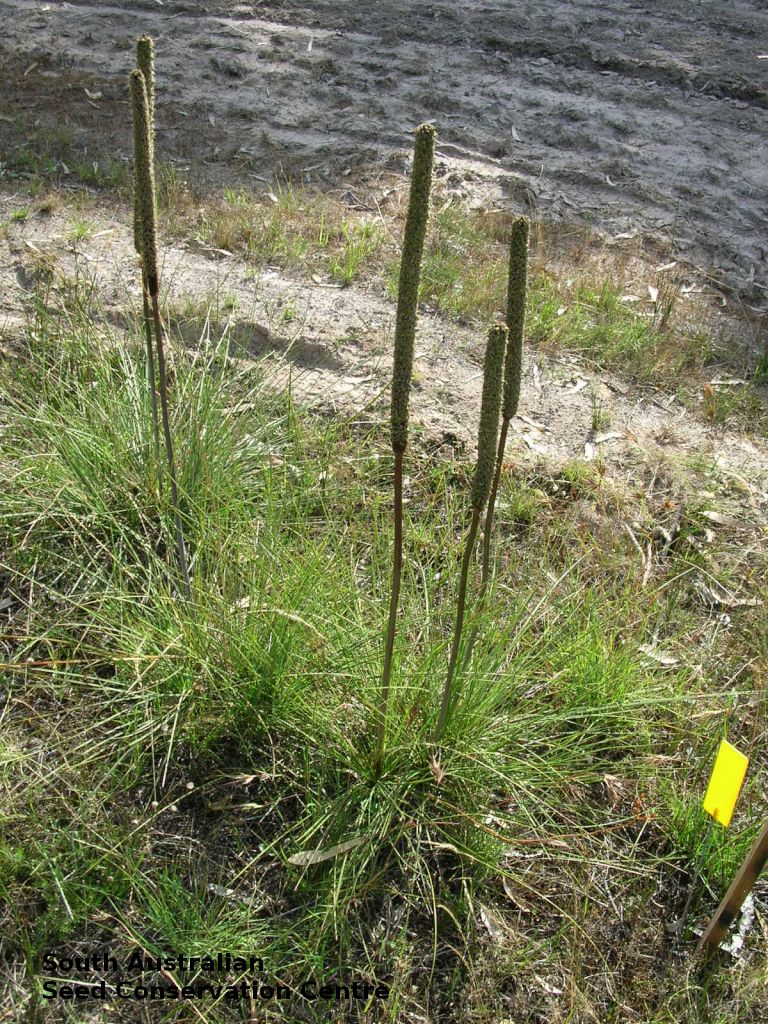
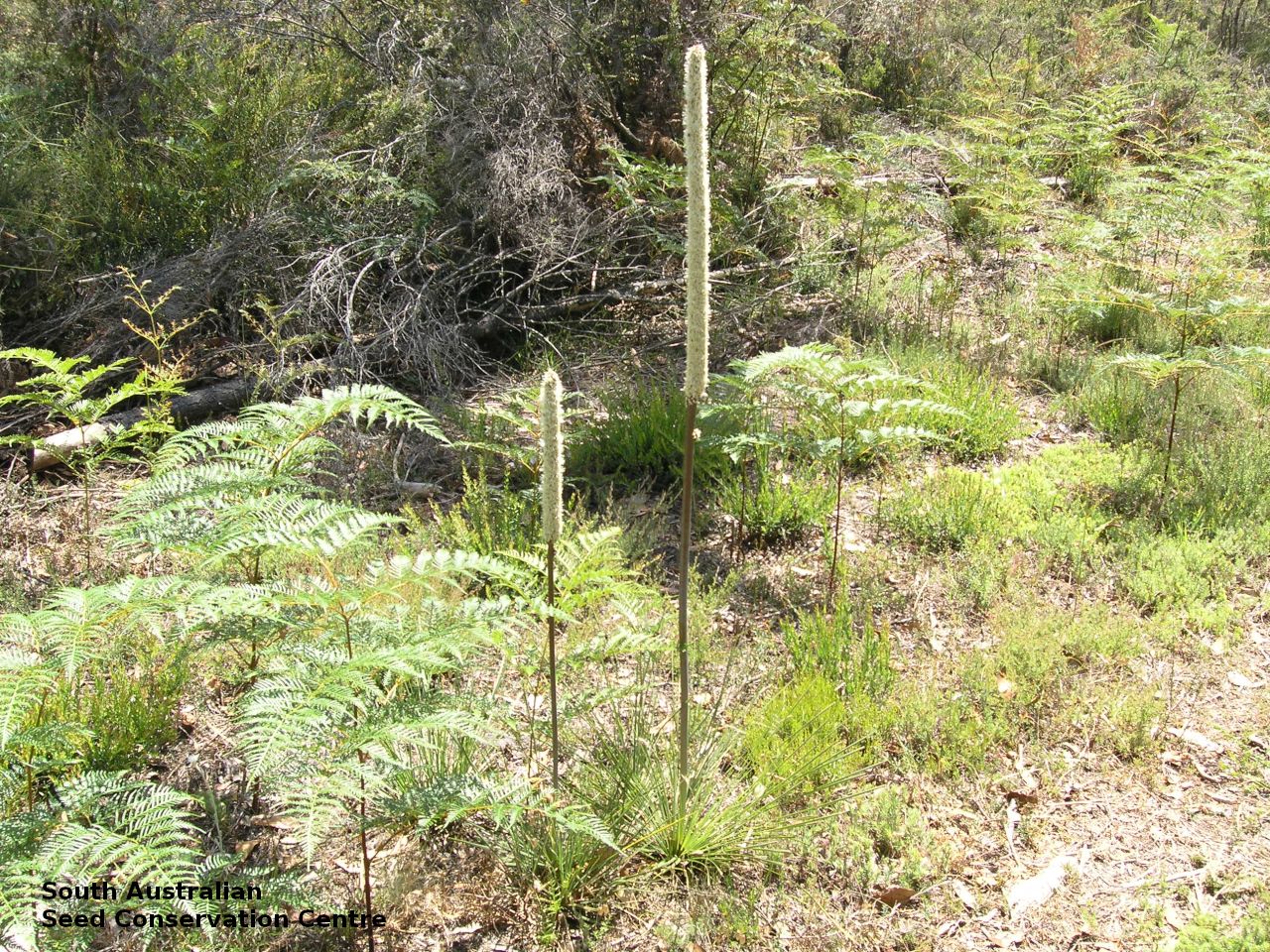
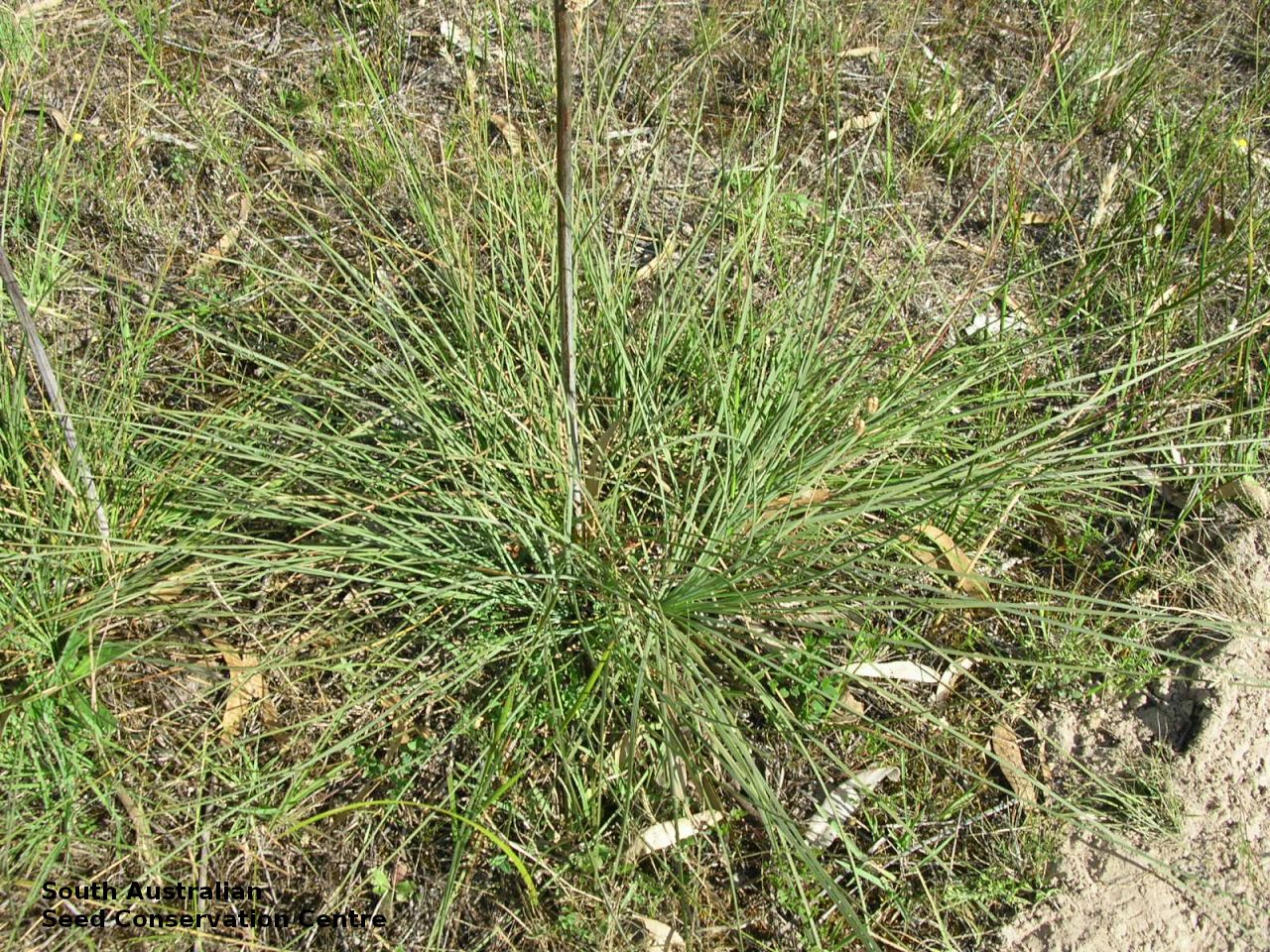
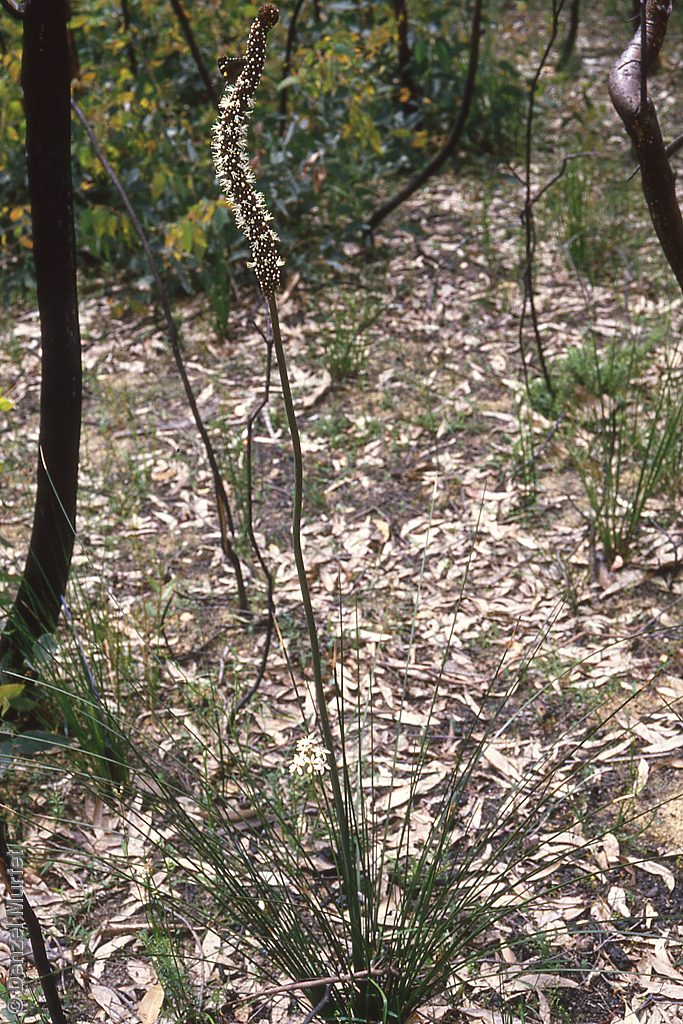
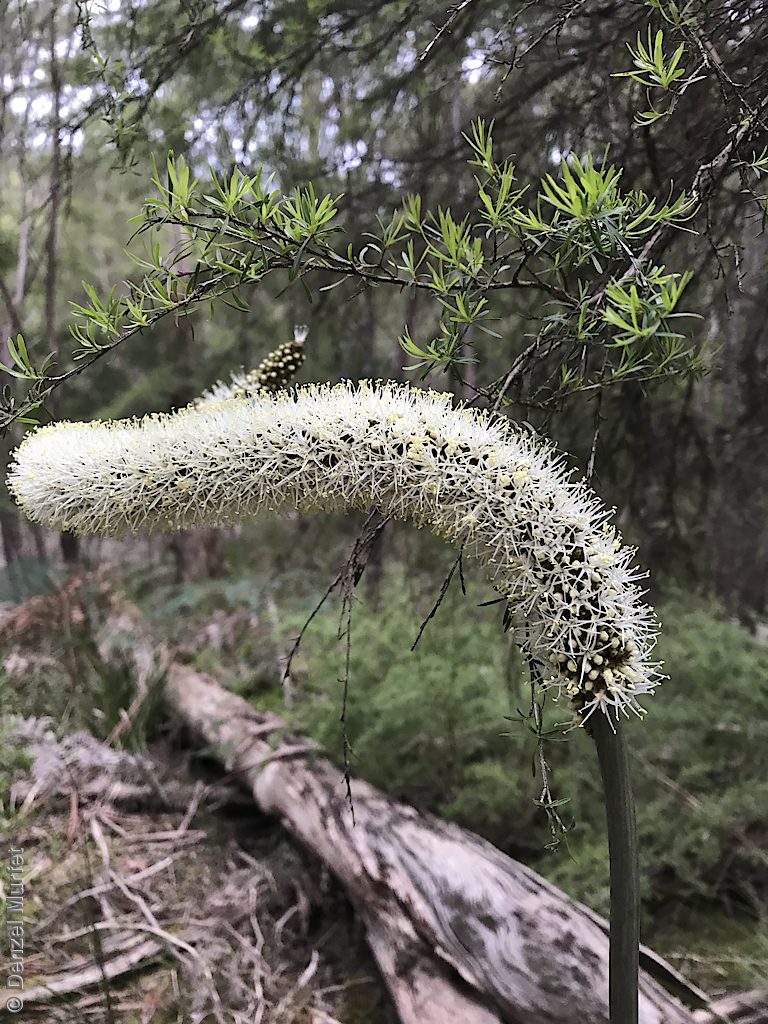
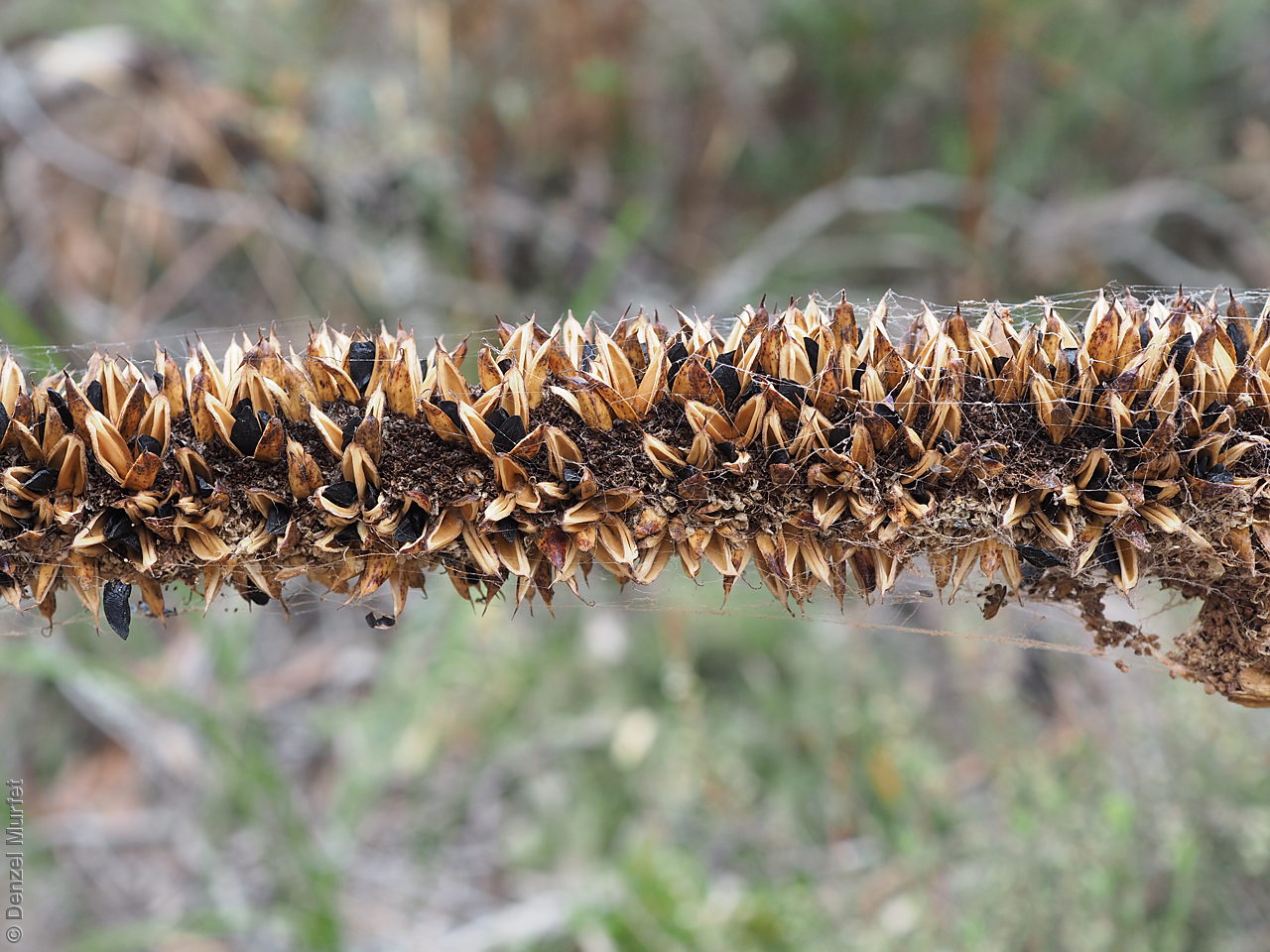
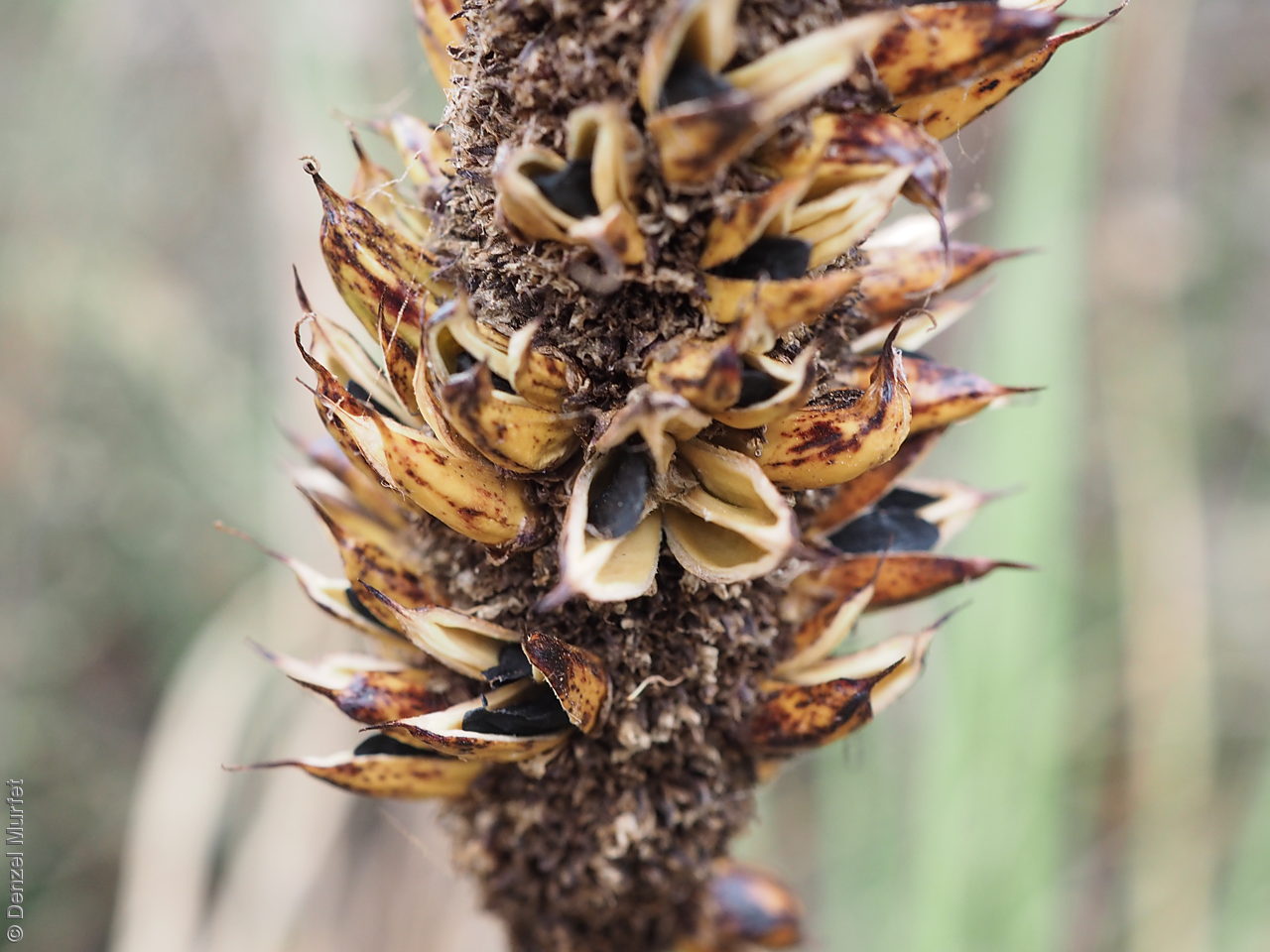
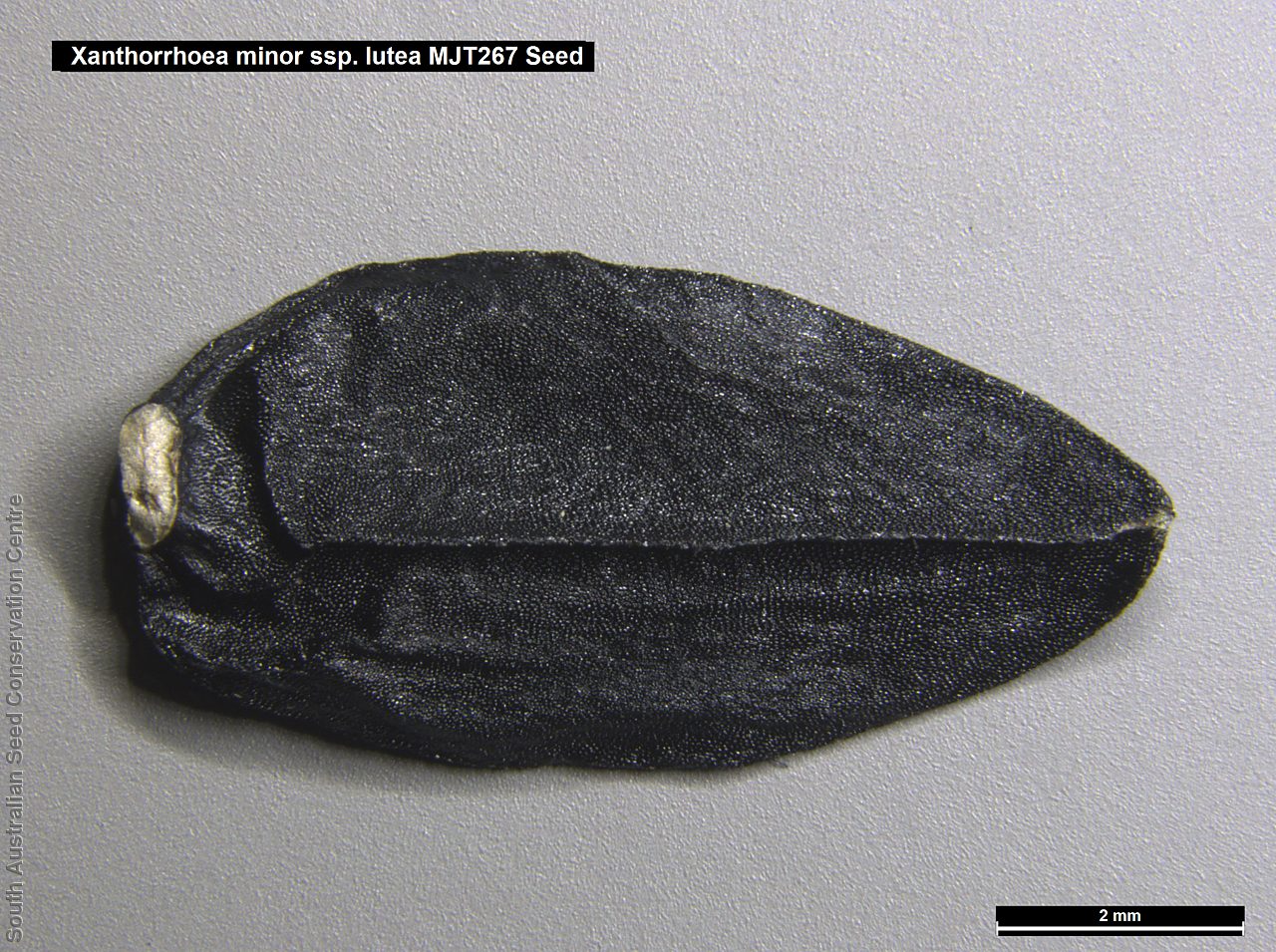
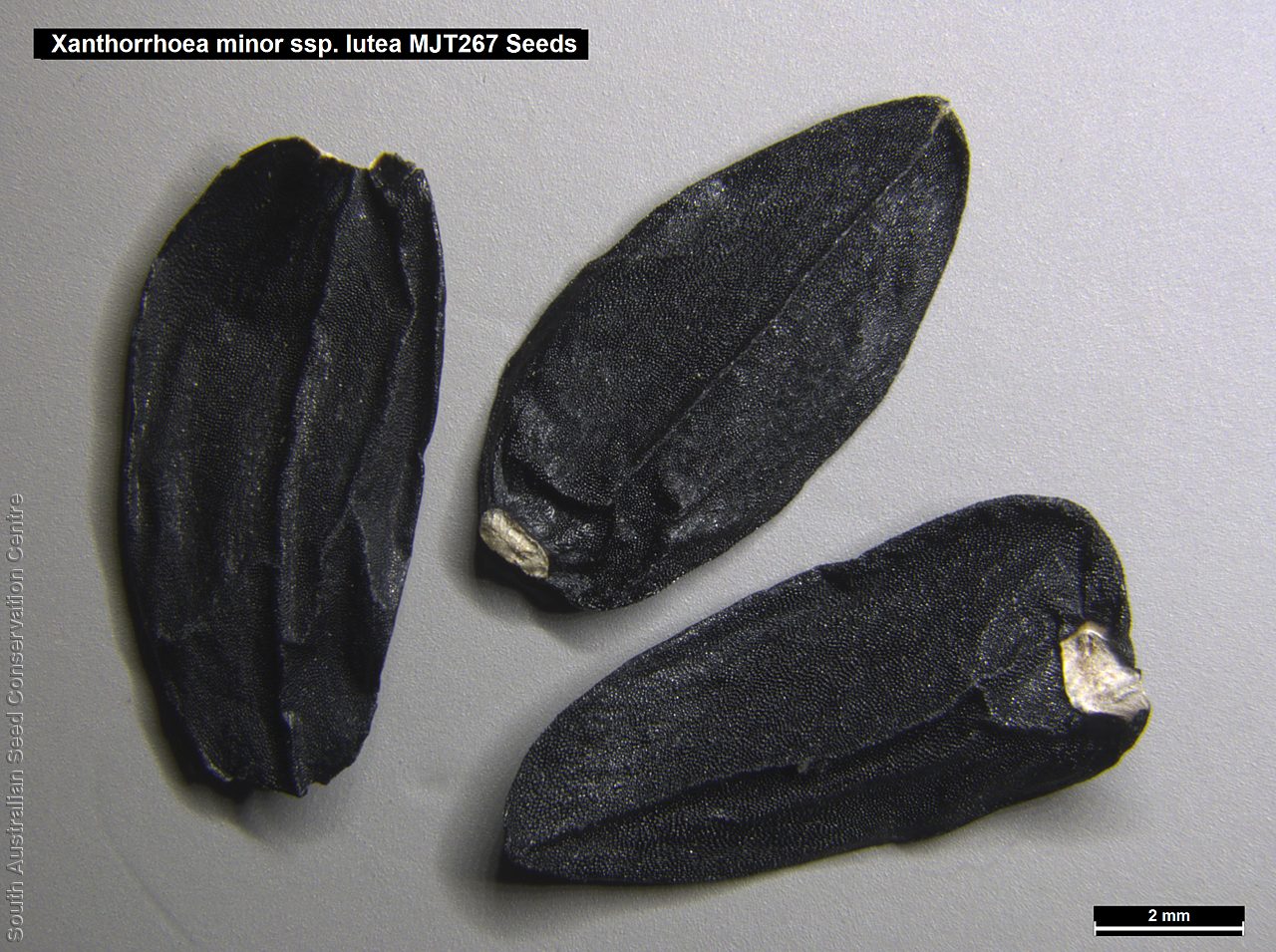


Botanical art
Common names
Little Grass-tree
Little Yacca
Etymology
Xanthorrhoea from the Greek 'xanthos' meaning yellow and 'rheo' meaning to flow; referring to the yellow resin that is often produced from the leaves. Minor from Latin meaning small; referring to the species smaller size compare with the other members of the genus. Lutea from the Latin 'luteum' meaning yellow; referring to the yellow colour inner tepals.
Distribution and status
Found in the South-east in South Australia, growing in heavy clay soil. Also found in New South Wales and Victoria. Native. Rare in South Australia. Rare in New South Wales. Common in Victoria.
Herbarium region: South Eastern
NRM region: South East
AVH map: SA distribution map (external link)
Plant description
Small shrub with stem almost totally subterranean and branched under ground. Leaves forming an erect tuft, depressed obtriangular, or often concave in cross-section, to 3.5 mm wide and 1.5 mm thick, green, not glaucous. Inflorescence with flower-bearing part to 30 cm long and 25 mm diameter with numerous flowers, with the inner tepals yellow.. Flowering between October to November. Fruits are numerous woody capsules maturing to dark brown along the spike. Capsule split into three segments, each containing one black seed. Seeds are flat pyramid-like black seed to 9 mm long and 5 mm wide. Seed embryo type is linear under-developed.
Seed collection and propagation
Collect seeds between December and February. Cut off fruit spikes that have mature capsules, usually turning dark brown or beginning to split. The seeds inside should be black. Place the fruit spikes in a tray or bucket and leave to dry for 3-4 weeks or until most of the capsules split. Then shake the fruit spike in a bucket to dislodge the seeds. Store the seeds with a desiccant such as dried silica beads or dry rice, in an air tight container in a cool and dry place. From on collection, the seed viability was high, at 90%. Seeds are non-dormant, viable seed should germinate readily without any treatment.
| Location | No. of seeds (weight grams) | Number of plants | Date collected | Collection number Collection location | Date stored | % Viability | Storage temperature |
|---|---|---|---|---|---|---|---|
| BGA MSB | 1,800 (14.23 g) 1,700 (12.9 g) | 30+ | 20-Jan-2010 | MJT267 South Eastern | 1-Jun-2010 | 90% | -18°C |
Number of plants: This is the number of plants from which the seeds were collected.
Collection location: The Herbarium of South Australia's region name.
% Viability: Percentage of filled healthy seeds determined by a cut test or x-ray.